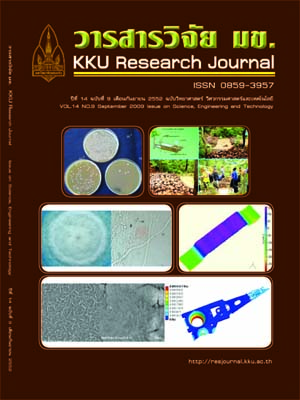Quality improvement of thin film coating process by applying experimental design (Thai)
Main Article Content
Abstract
The objective of this paper is to study the effect of process factors on deposition rate and surface roughness of carbon doped MoOx thin film coating deposition by the radio frequency reactive sputtering method for production and process design and development of a gas sensor. Central composite design (CCD) is used by varying four process factors including radio frequency (R.F.) power, operating pressure, argon to oxygen flow ratio, and carbon doping gas to oxygen flow ratio. The responses include deposition rate and surface roughness. Response surface methodology (RSM) with desirability function is used to determine an optimum operating condition that simultaneously maximizes the deposition rate and surface roughness of the carbon doped MoOx thin film coating process. The results show that the optimal operating condition for the carbon doped MoOx thin film coating process is R.F. power of 152 watts, operating pressure of 0.006 mbar, argon-oxygen flow ratio of 0.42, and carbon doping gas flow ratio of 0.09 giving an overall desirability of approximately 74%. The optimal operating condition produces a maximum deposition rate of 7.9 nm/minute and a maximum surface roughness of 41.9 nm.


